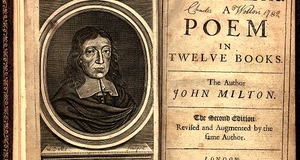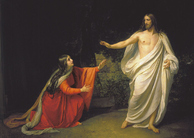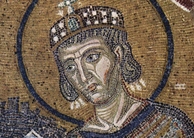The Historical Jesus: What Can We Really Learn?
By
2011, Vol. 3 No. 07 | pg. 1/1
KEYWORDS:
Whether or not one believes in the theology attached to him, it is impossible to deny the effect that Jesus has had on humanity. Movements following him span the globe. Wars have been waged and love has been shared in his name. But who was the man behind the theology? Who was the real Jesus? Christians know Jesus as the ‘Christ of faith’ (Leon-Dufour 1968:272) but historians want to know about Jesus of Nazareth and his earthly life in Palestine (Tuckett 2001:121). This is a very complicated task which will never be fully possible due to the meagreness of available sources. The way to gain insight into anything historical is by examining the sources but in the case of Jesus three things must be acknowledged. Firstly, all the available evidence is in literary form. Epigraphic or archaeological evidence can only give information about his assumed background but provides no information about him as man (Tuckett 2001: 121). Secondly, Jesus did not write anything himself. There are unfortunately no personal memoirs or documents and so the only sources available are of what he purportedly did and said as recorded by others (tuckett 2001:122). Finally, there are no direct eye-witness accounts of Jesus (Hengel 2005: 73). Every source which we do have will essentially be ‘Jesus as mediated through the eyes of others’ and so accordingly to produce a Jesus unaffected by the perceptions of others is impossible (Tuckett 2001:121). However this does not render the available sources useless, it simply means that careful analysis is necessary to unearth historical data (Sanders and Davies 1996:302), by recognising and allowing for the particular context from whence they arose. As such from the outset the extent to which we can reconstruct the historical Jesus is limited by the sources themselves (Tuckett 2001:122). A type of source that can be used is non-Christian literature although it is not highly regarded by scholars as particularly insightful. Most literature dating around the 1st century CE that survives today was authored by a small elite of the roman empire (Sanders 1993:49).Classical Greek and Roman historians tended to ignore Jesus as unworthy of consideration (McArthur 1970:11). They have would merely seen him as a trouble maker from an insignificant part of the Roman Empire, that is if they had even heard of him (Sanders 1993:49). Yet there are a few passing references made albeit ‘Brief allusions to the movement that began in his name’ (Clark Kee 1977:42). Jewish historian Josephus mentions Jesus in his book Antiquities of the Jews (Sanders 15: 1993). He describes James as the ‘brother of Jesus who is called Christ’. Evidently Josephus thought that this would assist in identifying James more readily to readers (Tuckett 2001:123). From this we can infer that Jesus was a relatively well known figure, at the very least to Josephus’ audience.There is also Testimonium Flavianum, a controversial paragraph that is in all likelihood not authored by Josephus in its current form (tuckett 2001:124).It is quite clear from the explicitly Christian language that the Christian scribes who preserved the works of Josephus ‘could not resist the temptation to revise the text’ (Sanders 1993:50) In spite of this if one deletes ‘the obvious bits’ it is seems plausible and therefore could be a legitimate non-Christian source (tuckett 2001:124). In Annals 15:44 Roman historian Tacitus makes reference to ‘Christus’ a man who had ‘suffered extreme penalty during the reign of Tiberius at the hands of procurator Pontius Pilate’(Tuckett 2001:123). Although Tuckett argues that this constitutes ‘independent evidence’, this is not really the case. As demonstrated by Wells (1982:16) there is reason to believe that Tacitus is simply repeating what Christians have told him or at least information about Christianity that was garnered from Christian sources. Firstly, He calls Pilate procurator when the correct title was prefect. Had Tacitus consulted archival records he would not have come across the term procurator, so it is likely that he obtained this information from elsewhere. Secondly, He refers to Jesus as Christus as if it were his proper name. Christus(meaning messiah) is a theological role assigned to Jesus by believers and the fact that Tacitus refers to him as such is an indicator of Christian sources. Therefore Tacitus cannot be said to provide evidence independent of Christians. There is also rabbinic evidence relating to Jesus although he is also not mentioned by name but as ‘a certain person’, Balaam or Ben Stada and sometimes as ben pandira meaning son of Pandira, a reference to the story that he was the illegitimate child of a roman soldier named Pandira .the rabbinic sources only Presuppose Jesus’ existence whilst offering little historical information about him(Clark Kee 1977:61). They are perhaps better viewed as a polemic directed against followers of Jesus rather than expressions of an independent historical memory of Jesus (McArthur 1970:11). Overall the importance of non-Christian evidence compared to Christian evidence is minor (Wells 1982:16). The most these sources can do is provide us with a context (Vermes 1983:43) and affirm that Jesus was not a Christian invention (Tuckett 2001:124). After examining non-christian sources the next port of call are Christian sources, which are generally considered more useful than their non-Christian counterparts. Yet not all Christian sources are equal. There is gulf between the gospels and the non-canonical texts, the former being more insightful. The Letters of St Paul (Tuckett 2001:124) are one of the earliest Christian sources avaliable . Despite their age they are considered less important than the gospels in the quest for historical Jesus because the letters tends to portray Jesus as ‘a pre-existent mythical being’ (Theissen and Merz 1998:17). The main focus of the letters is Jesus Christ as opposed to Jesus of Nazareth, so they offer little direct information about the historical Jesus. The New Testament apocrypha are set of non-canonical texts which include the gospel of Thomas, the gospel of Peter, the secret gospel of Mark and Papyrus Egerton 2(Tuckett 2001:129). They are dated later than the gospels and are of a somewhat fanciful, romantic and fragmented nature. For this reason the apocryphal gospels are not considered particularly useful in terms of the historical Jesus (Theissen and Merz 1998:20). It is widely agreed that the primary sources for the historical Jesus are the New Testament gospels (Sanders 49:1993). Out of all the sources available the gospels provide historians with the most information about Jesus of Nazareth. Unlike the non-Christian sources their primary focus is Jesus, they also provide more information about him than other Christian texts and despite the proselytising intentions of the gospel authors some of the material from the traditions presented extends a long way back (Theissen and Merz 1998:27). The first aspect to contemplate when examining the gospels is their literary genre. There is general consensus amongst scholars that the Gospels are not ‘straight reporting’ (Clarke Kee 1977:37). Although they are presented in biographical form as a record of the life of Jesus (Vermes 1983:19), they are not historical biographies. The motivation of the gospel authors was to spread the message of Jesus as the son of God, this is known as kerygma or proclamation (Sanders and Davies 1996:301) .For this reason the gospels should recognised as theological proclamation, statements of faith and attempts at convincing others to follow Jesus Christ(Fredriksen 2000:4). Although this means that the gospels are far from perfect sources, there are still useful to scholars because of the way in which they were created. The gospels have their origins in oral traditions that were originally founded upon eyewitness memory (Hengel 2005:86). In the beginning this oral traditions were comprised of isolated stories, there was no continuous narrative. These stories were repeated in response to the various needs in the community and it is accepted that they were probably modified during this process (McArthur 1970:6). So when writing the gospels the evangelists were using material obtained from oral transmission and that material generally has some kind of a relationship to the historical life of Jesus (Sanders and Davies 1996:301). In the gospels there is distinction between John and the ‘synoptics’, that is Mark, Matthew and Luke, the latter being considered as more important (Tuckett 2001:121). The gospel of John is quite different from the other three gospels (Tuckett 2001:125).Dated circa 100 C.E. (Wells 1982:10) it has largely been set aside by scholars and given little historical credit compared to Mark, Matthew and Luke. The main reason for this is the charge that it is largely theological interpretation masquerading as history (McArthur 1970:4). The gospel of John does not present a simple narrative but is saturated with the beliefs of the author and his community. More so than the synoptic gospels it is concerned with Kerygma(McArthur 1970:5) and imparts ‘high Christology’ that radically alters the portrayal of Jesus found in the other gospels (Hengel 2005:83). The Structure of John also follows the style of classical apostolic preaching (Leon-Dufour 1968:80-81). John’s ‘favourite trick’ was making Jesus’ audience misunderstand his words so that Jesus can ‘enunciate the theology’. There are no signs of this technique in the synoptic gospels (Wells 1982:126). This evidence of the way that John reworks source material highlights his unreliability as a historian and is another reason why the text is not highly esteemed as a source (Wells 1982:136). Although for instance the Easter narrative of John is more plausible than its synoptic counterparts, overall it provides a very indirect witness to the historical Jesus and thus in quest for the historical Jesus plays a secondary role (tuckett 2001:125). The Synoptic gospels offer the basis of much of the knowledge historians have about Jesus of Nazareth. Comprising of Mark, Matthew and Luke, the synoptic gospels are known as such because they tell approximately the same story in the same sequence and often in the same wording (Sanders and Davies 1996:3). The prime explanation for the similarities is the two source theory which contends that Mark’s gospel was used as a source by Matthew and Luke. Matthew and Luke also used another source known as ‘Q’. Consequently the gospel of Mark is identified as the primary source for traditions that appear in all three and ‘Q’ as the primary source for tradition that appear in both Matthew and Luke (Tuckett 2001:131). The material that is original to Matthew and Luke is not as reliable as Q or Mark because it is considered to have been subject to greater theological tampering. An example of this occurs in the stories of Jesus’ births which preface material found in Mark and is theologically motivated (Vermes 1983:19). Conversely Q attaches no explicit theological meaning to Jesus’ suffering and death (Clark kee 1977:61). Jesus is pictured in Q as historical and as a person rather than a ‘faceless spokesman for God’ despite this there is not a sufficient enough narrative in Q to construct a picture of Jesus . The Main focus of Q is the future of kingdom of god rather than the historical Jesus (Clark Kee 1977:117). The author of Mark obtained most of his material from the previously mentioned oral traditions and then rearranged it for doctrinal or catechetical purposes(Leon-Dufour 1968:138). Above all we can see that even the best sources available are not by any means perfect, and this of course restricts that extent to which one can ever really know the historical Jesus. Having looked at the sources themselves, the next step is to look at the various traditions contained within them. Scholars have formulated various criteria for this purpose.The criterion of dissimilarity is where a tradition can be attributed to Jesus if it is dissimilar to the views of Judaism and early Christianity (tuckett 2001:132).This essentially entails the rejection of material which is derived from Judaism or Early Christianity (McArthur 1970:139). An example of this can be found in Matthew with Jesus saying ‘let the dead bury the dead’ to a disciple who wished to bury his father before joining Jesus’ ministry. (Sanders and Davies 1996:317). The son’s burial of his father is considered an important ritual in Judaism and remained so in early Christianity. This saying seems to originate from nowhere and also goes nowhere. Accordingly one can confidently claim this as an authentic saying of Jesus, since there does not seem to be any other explanation for its inclusion. On the other hand the use of this criterion encompasses the threat of producing an imbalanced and distorted picture of Jesus where he is cut off from his Jewish roots(Tuckett 2001:132). furthermore it is imperative to note that there is not enough information about early Christianity or Judaism to decisively establish what was ‘unique’ or dissimilar to it(Sanders and Davies 1996:316). Taking the criticisms of the dissimilarity criterion into account some scholars find it crucial to view Jesus in his Jewish context. The statement that Jesus was a 1st Century Palestinian Jew is indisputable (Sanders 1993:10). Fittingly the traditions are judged on how they fit into the Jewish context. For example, Jesus spoke Aramaic and hence Semitic features in the Greek language of the sayings recorded in gospels are perhaps an indicator of authentic material (tuckett 2001:135). Yet he had to have been doing something to stand out, after all he was executed. There is a danger of fitting Jesus too snugly into his surrounding world. This too can create a distorted imbalanced image of Jesus. The criterion of embarrassment is where a passage or theme is historically reliable if it is directly against what the evangelists wished to be so, if it is something that the evangelists would have found embarrassing or unwanted (Sanders and Davies 1996:304). An example can be found in Mark, who scrambles to produce positive contact between Jesus and Gentiles however the apparent paucity of material on gentiles shows that there were limits on invention (Sanders and Davies 1996:306). Mark could not just make things up as he wished. Therefore we can see it as historically reliable that Jesus mostly limited his ministry to the people of Israel. The criterion of coherence asserts the authenticity of traditions that adhere with traditions already accepted as authentic (tuckett 2001:132). As such it rests upon precedent. The issue with this is that it means using a source to verify another source. If the verifier source has been established using other faulty criteria, then it is falsity perpetuating falsity. It is worth remembering that good fiction can often seem coherent as historical fact. (tuckett 2001:132). Perhaps the most frequently used criterion by scholars is that of multiple attestations, where a tradition is seen as historically reliable if it is attested to in more than one source. However if a tradition appears in all the synoptic gospels, this does not necessarily indicate that it is multiply attested. (Tuckett 2001:134). Thanks to the two source theory Matthew and Luke do not count as independent testimony when they are repeating Mark (Wells 1982:10). Multiple attestations are not good enough what is required is Multiple attestations by multiple literary forms that were formed independently of one another(McArthur 1970:139). An example of this can be found in rabbinic sources. B. Sanh. 43a says that on ‘the eve Passover’ Jesus was ‘hanged’ (Tuckett 2001:123). This Chronology of the rabbinic evidence fits with john (Clark kee 1977:48). Therefore the passion and Easter narratives presented by john have been multiply attested to, whereas the accounts in the synoptic gospels have not because they all originate from Mark (Theissen and Merz 1998:35). A final criterion is the ‘friend and foe’. If a view is common to both believers and non-believers then it can be said to be authentic. An example is the view of Jesus as a magician and miracle worker (Sanders and Davies 1996:330). Rabbinic evidence describes Jesus as a magician who ‘led Israel astray’ (Tuckett 2001:123). Although the Jewish sources are of a polemic nature they did not deny this aspect of Jesus. Hence we can say the tradition of Jesus involved with some kind of ‘magic’ activity is historically reliable. In conclusion one can know certain things about the historical Jesus but these certain things are neverthless still established using meagre sources. Although historians will continue to analyse the traditions themselves, unless there is miraculous discovery of a new source the old familiar problems will remain. In that sense one can never really know the historical Jesus.
References Burridge, R.A. ‘Who writes, why and for whom?’ in Bockmuehl, M. (ed.). The Written Gospel (Cambridge, 2005). Clarke Kee, H. Jesus in History- An approach to the study of the Gospels 2nd ed. Harcourt Brace Jovanovich, (New York, 1977). Fredriksen, P. From Jesus to Christ 2nd ed. (Yale, 2000). Hengel, Martin. ‘Eye Witness Memory and the Writing of the Gospels’ in Bockmuehl, M. (ed.). The Written Gospel (Cambridge, 2005). Leon-Dufour, X. The Gospels and the Jesus of history translated by John McHugh (London, 1968). McArthur, H.K. In search of the Historical Jesus (London, 1970). Sanders E.P. and Davies M. Studying the synoptic gospels (London, 1996). Sanders, E P. The Historical Figure of Jesus (London, 1993). Stanton, G.N. Jesus and Gospel (Cambridge, 2004). Theissen G. and Merz A. The Historical Jesus: A comprehensive guide (Minneapolis, 1998). Tuckett, C. ‘Sources and Methods’ in (ed) Bockmuehl, M. The Cambridge Companion of Jesus (Cambridge 2001). Vermes, G. Jesus the Jew (London, 1983). Wells, G.A. The historical evidence for Jesus (New York, 1982). Suggested Reading from Inquiries Journal
Inquiries Journal provides undergraduate and graduate students around the world a platform for the wide dissemination of academic work over a range of core disciplines. Representing the work of students from hundreds of institutions around the globe, Inquiries Journal's large database of academic articles is completely free. Learn more | Blog | Submit Latest in Theology |

















